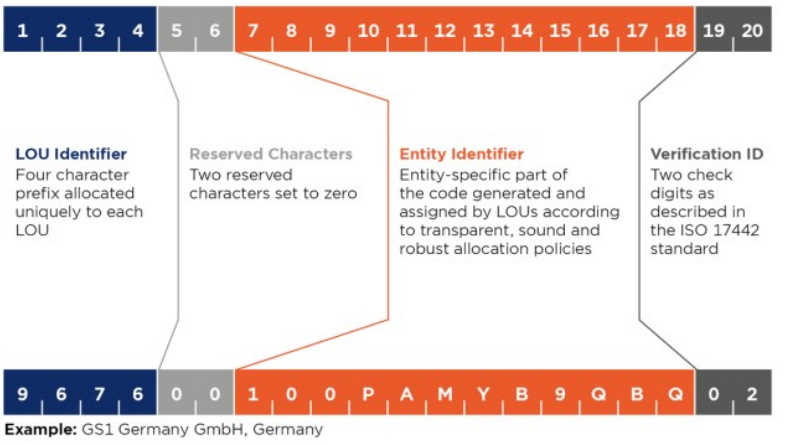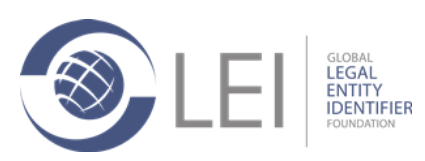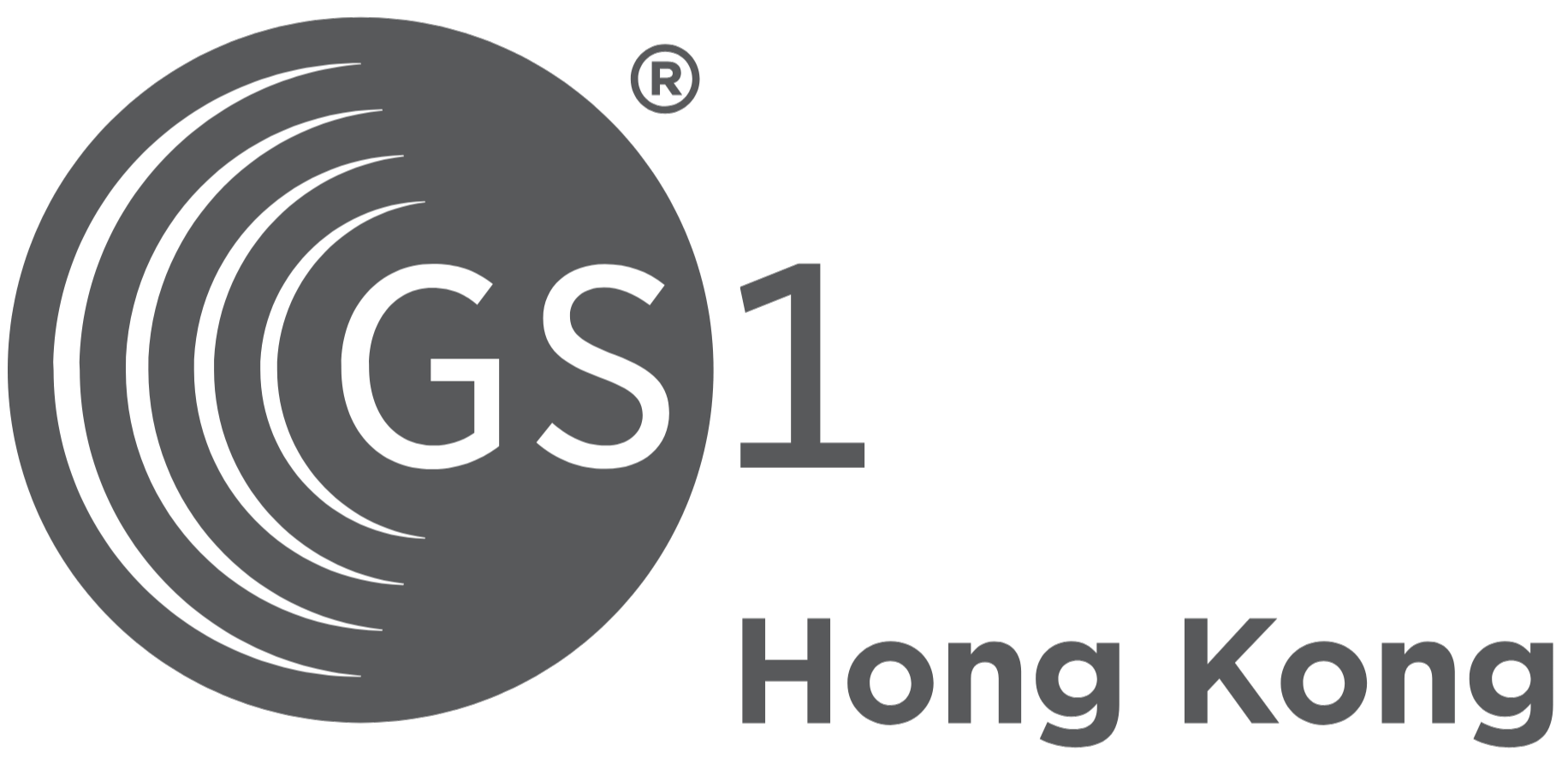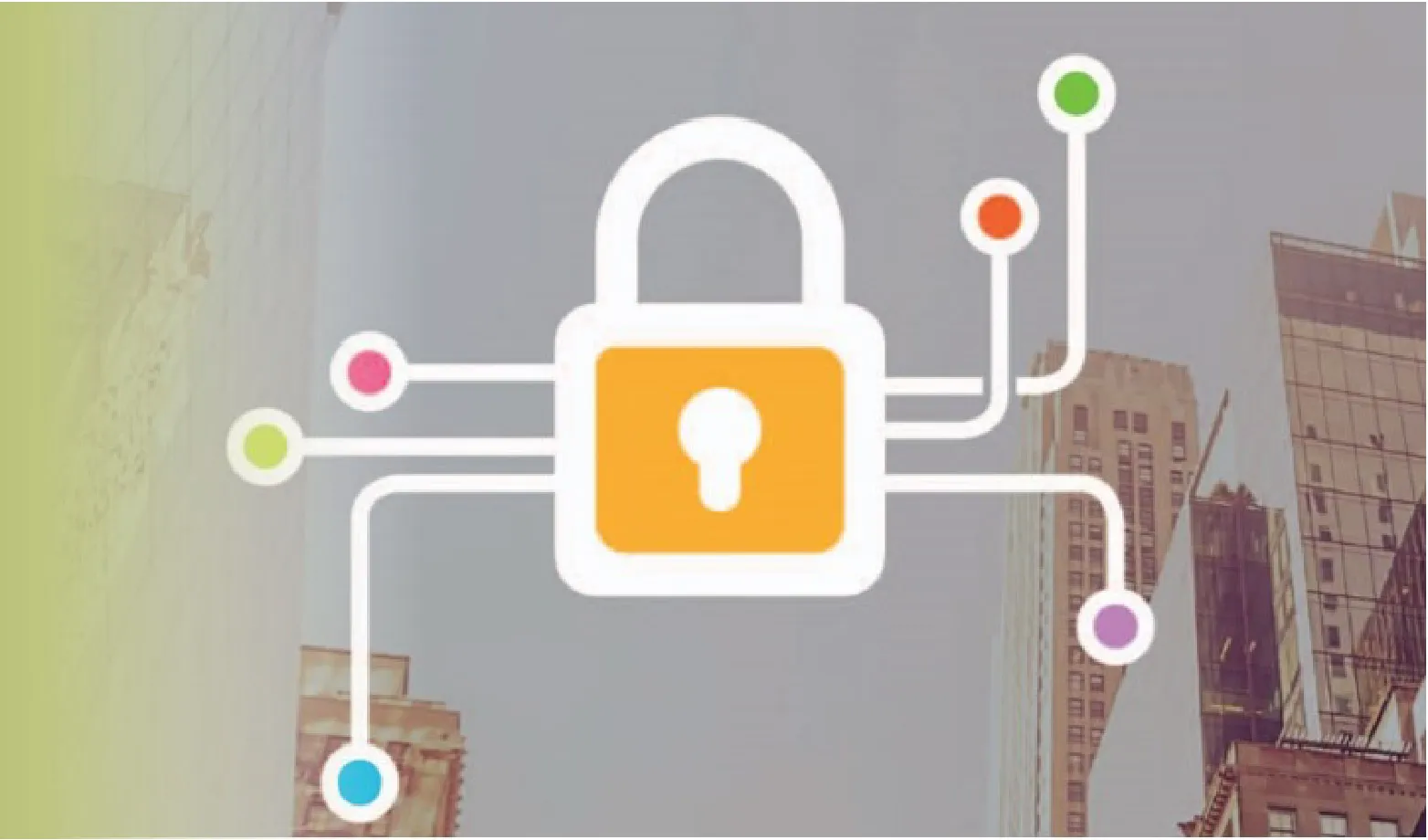Overview
An Legal Entity Identifier (LEI) is used to identify an entity in a financial transaction. It is an alphanumeric code consisting of 20 digits based on the ISO standard 17442.
An LEI delivers transparency and security of entity identification among financial parties, enabling traceability of the transactions.
The LEI is a reference data tool to standardize how a counterparty is identified on financial transactions. Its goal is to help improve the measuring and monitoring of systemic risk and support more cost-effective compliance with regulatory reporting requirements. A single legal entity should only be assigned one LEI globally.
GS1 does not mandate which global entities require to apply LEI. These requirements are driven by international regulations applied to financial market participants.
GS1 is a Local Operating Unit (LOU) accredited by GLEIF to issue LEI’s. Becoming an LOU is a commitment to the standards set by GLEIF in both data quality and customer service. As a local Registration Agent of GS1, you could apply LEI, renewal and transfer services for the LEI via GS1 Hong Kong.
Apple LEI, the initial registration for an LEI is €89 for the first year and €59 per annum for each subsequent year.
Who needs an LEI?
An LEI can be requested for all parties in a financial transaction including but not limited to:
- Registered Companies including Registered Subsidiaries
- Funds/Trusts
- Non Profit/Charity Organizations
- Government Bodies and Organizations
- Sole Proprietors (Individuals that appear in their local register)
- Branch offices (Main HQ entity must already have an LEI)
An LEI should NOT be requested for individuals or operating divisions. These entities should utilize the LEI of their parent organization.
Companies partaking in the derivatives trade and which are required to report this to a transaction register (link to the website of the Bundesanstalt zur Finanzdienstleistungsaufsicht [Federal Institute for the Supervision of Financial Services] www.bafin.de) which are:
- Banks and financial institutions
- Investment funds
- Insurance companies
- Securities service providers
The LEI is furthermore interesting for export-oriented companies as well as for other companies of the real economy which conclude derivative contracts.
Private individuals and legally dependent business units do not require an LEI, however.
For some companies, the LEI is not a voluntary form of identification, but mandated by local, national or international regulations. For more information on regulations requiring an LEI see, https://www.gleif.org/en/about-lei/regulatory-use-of-the-lei
What is the purpose of an LEI?
An LEI is required for the compliance with European and international regulations, such as the CRD IV, EMIR, Solvency II, and the Dodd-Frank Act and has thus become an integral part of reporting in many areas of the financial sphere. Moreover, the LEI has already been mentioned in other regulations as, for instance, in the Technical Standards pertaining to the AIFMD (Alternative Investment Fund Managers Directive) or in the context of MiFID II (Markets in Financial Instruments Directive II)/ MiFIR (Markets in Financial Instruments Regulation).
What is the validity period of an LEI?
The validity period of an LEI is 1 year from the issuance date or from the last renewal date going forward. If the LEI is not renewed within the 1 year time period, the registration status will default to Lapsed. This Lapsed status may affect your entity's ability to participate in regulatory reporting and financial transactions.
Application for an LEI
LEI application steps
Online LEI application process
You can apply for an LEI quickly and easily via the GS1 online portal.
There are 3 steps to the process:
Step 1: Register on the GS1 LEI Portal
First you need to register on the GS1 LEI portal and set up a user account. When logged into your user account, you can then apply for one or more LEIs, renew your existing LEIs or conveniently transfer your LEI code from another provider to GS1.
Step 2: Apply for one or more LEIs
Once logged into your user account, submit your application for one or more LEIs.
You can also apply for several LEIs at once. Please refer to the Guide to bulk LEI application (PDF).
Step 3:
Once the company information you have submitted has been validated you will receive your LEI.
Enquire about LEI registration
(Email: lei@gs1hk.org Tel: 2863 9742)
Benefit of our LEI Service

Global LEI issuing agency with local support

Simple and clear LEI registration process

Simple, Effortless, free of charge LEI transfer
![]()
Competitive prices for LEI applications Competitive market pricing
GS1's LEI services can help you with obtaining, transferring and renewing your Legal Entity Identifiers (LEIs).
With more than 40 years of experience in the identification of unique products and entities, GS1 and its global network of 112 Member Organisations are uniquely qualified to offer complete LEI services, with expertise in data validation and knowledge of local language, laws and regulations.
The major benefit of GS1’s LEI services are:
-
High Accuracy in data validation checks as we have been doing this as part of GS1 all along.
-
Ease in communications as we know the local language, supporting companies in English, Mandarin and other dialects, and with a local presence, which means companies can call us directly for any enquiries.
-
Support in advisory as we understand the laws and regulations in Hong Kong (as well as overseas laws and regulations we have a global presence in 112 countries worldwide)
-
Competitive Rates as compared to other issuing agency as volume drives down cost
-
Efficiency in the LEI issuance as a result of all of the above
Relationship between GS1 and GLEIF (GS1 as an LOU)
GS1 Global office is a Local Operating Unit (LOU) accredited by GLEIF (Global Legal Entity Identifier Foundation) to issue LEI. Becoming an LOU is a commitment to the standards set by GLEIF in both data quality and customer service. GS1 is committed to supporting the Global LEI system by being the only LOU with a representative on the board of directors for GLEIF (GS1 India CEO Ravi Mathur).
LEI Fact Sheet (Download the LEI leaflet)
Transfer or Renew an LEI
Existing LEI Holders - Transfer and Renew with GS1
If you already have an LEI (or multiple LEIs) you can transfer and renew through GS1.
Click here to transfer an LEI
It is free of charge to transfer and fees paid remain valid until the renewal date. GS1 will contact you when the LEI renewal is due.
The transfer of an LEI is managed directly between the issuing authorities.
Enquire about LEI transfers
(Email: lei@gs1hk.org Tel: 2863 9742 )
LEI Fees
How much does an LEI cost?
Price list for Legal Entity Identifier (LEI) - valid from January 2, 2018
All prices show in EURO and are exclusive of the statutory value-added tax.
| Items | Cost |
|---|---|
|
SmartLEI single/ renewal application (one-year term) |
€99 |
|
LEI single application (one-year term) |
€89 |
|
LEI renewal (one-year term) |
€59 |
|
LEI collective renewal |
Enquire: |
|
LEI account change |
€0 |
|
LEI Transfer Fee |
€0 |
FAQ
What is an LEI?
LEI stands for Legal Entity Identifier.
An LEI is used to identify companies active in financial markets. It is an alphanumeric code consisting of 20 digits.
What does an LEI do?
The LEI has information which helps identify exactly who an entity is, and who might be the owner of this entity.
It delivers transparency and security of entity identification among financial parties, enabling traceability of the transactions.
Apply for an LEI or contact GS1 Hong Kong about LEI (Email: lei@gs1hk.org Tel: 2863 9742 )
Why was the LEI created?
The 2008 financial crisis made regulators around the globe aware of the need for a universal indicator to help identify entities who are involved in financial transactions.
What is the structure of an LEI?
LEI 20 character structure
The LEI Code is structured in accordance with the ISO standard 17442 and has a 20-character alphanumeric format.

Sample Code: 1234 56 789101112131415161718 1920
1234: Four character prefix designating the LEI issuing agency - LOU (Local Operating Unit);
56: two-digit separation, temporarily reserved
789101112131415161718: twelve-digit identification of the legal entity
1920: two-digit checksum in accordance with the ISO 17442 standard
Who issues an LEI?
GLEIF Accredited Organisations
The issuing of an LEI is subject to strict regulations. Only organisations that have successfully passed the Global Legal Entity Identifier Foundation (GLEIF) accreditation process are entitled to issue LEIs.
What is Local Operating Units (LOUs)?
Accredited issuers are called Local Operating Units (LOUs). GS1 AISBL is an accredited LOU. All requests for LEIs received by GS1 Hong Kong are issued by GS1 AISBL. GS1 Hong Kong acts as a Registration Agent of the GS1 AISBL, Local Operating Unit (LOU)
Who is GLEIF - The Global Legal Entity Identifier Foundation?
The Global Legal Entity Identifier Foundation (GLEIF) was established by the Financial Stability Board in June 2014.
The GLEIF is tasked to support the implementation and use of the Legal Entity Identifier (LEI). The foundation is backed and overseen by the LEI Regulatory Oversight Committee, representing public authorities from around the globe that have come together to jointly drive forward transparency within the global financial markets. GLEIF is headquartered in Basel, Switzerland.

What is GLEIS - The Global Legal Entity Identifier System?
GLEIS stands for Global Legal Entity Identifier System
The Global Legal Entity Identifier System (GLEIS) enables the clear, unambiguous identification of participants in financial transactions.
The basis of the system is ISO 17442. This standard defines the elements of clear legal identification of the relevant legal identities involved in a financial transaction.
Legal Entity Reference Data
An LEI data record consists of an ID and its associated data, known as a Legal Entity Reference Data (LE-RD).
GLEIS was expanded in 2017 to include data with which connections with parent companies could be mapped.
If a legal entity which has a holding company wishes to apply for a LEI, the relevant data must be provided while applying which, in the simplest case, is the LEI of the holding company.
Further development of the Global Legal Entity Identifier System is carried out by the Global Legal Entity Identifier Foundation (GLEIF) in collaboration with the Local LOUs.
The Global LEI Foundation (GLEIF) is supervised by the LEI Regulatory Oversight Committee (LEI ROC).
What data is saved and published with the LEI?
GLEIF Database
Each LEI is associated with key data relating to the company and/or fund. This is stored in the GLEIF database.
-
Official name of the legal entity or of the fund manager
-
Registry name and registry number
-
Legal form of the company
-
Registered office of the headquarters or of the fund manager
-
ISO country code
-
Date of first issue of the LEI
-
Date of the last change of the saved information
-
Due date of the next LEI renewal
-
Direct and Ultimate Child-Parent Relationships of the entity
Who needs an LEI
Entities with OTC Derivative Transaction in Hong Kong
According to the announcement from Hong Kong Monetary Authority starting from 1 April 2019, the mandatory use of Legal Entity Identifiers (LEIs) in trade reporting will apply to the identification of entities that are on a reporting entity’s side of a transaction.
Derivatives Trading and the European Market Infrastructure Regulation (EMIR)
Since February 2014 any organisation participating in the trade of derivatives and who is required to comply with the EMIR (European Market Infrastructure Regulation) is required to have a mandatory LEI.
Compliance with the European MiFID II/MiFIR regulation
As of January 2018, in accordance with the new European MiFID II/MiFIR regulation (Art.26 of Regulation nr.600/2014), European financial institutions must notify their national financial services authority / regulator of all transactions carried out relating to certain financial instruments.
Each legal entity, active in trade of financial instruments offered on a trading platform (or underlying products being exchanged on a platform), such as shares, bonds, warrants, state loans, warrants, state loans and state notes is required to be identified with an LEI. (This measure does not apply to some investments, investment insurances, term deposits, deposits and savings certificates products.)
All legal entities wishing to purchase or sell one of the above mentioned financial instruments, is required to identify itself by an LEI. The legal entity is responsible for obtaining its own LEI.



